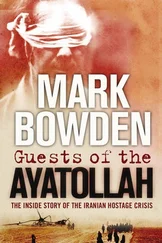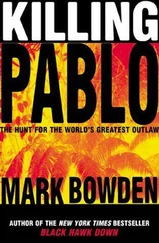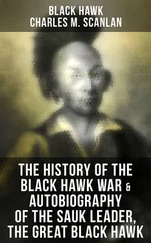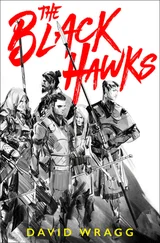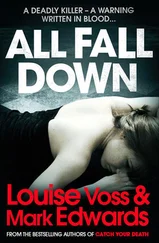Mark Bowden - Black Hawk Down
Здесь есть возможность читать онлайн «Mark Bowden - Black Hawk Down» весь текст электронной книги совершенно бесплатно (целиком полную версию без сокращений). В некоторых случаях можно слушать аудио, скачать через торрент в формате fb2 и присутствует краткое содержание. Город: New York, Год выпуска: 1999, ISBN: 1999, Издательство: Atlantic Monthly Press, Жанр: nonf_military, на английском языке. Описание произведения, (предисловие) а так же отзывы посетителей доступны на портале библиотеки ЛибКат.
- Название:Black Hawk Down
- Автор:
- Издательство:Atlantic Monthly Press
- Жанр:
- Год:1999
- Город:New York
- ISBN:978-0871137388
- Рейтинг книги:3 / 5. Голосов: 1
-
Избранное:Добавить в избранное
- Отзывы:
-
Ваша оценка:
- 60
- 1
- 2
- 3
- 4
- 5
Black Hawk Down: краткое содержание, описание и аннотация
Предлагаем к чтению аннотацию, описание, краткое содержание или предисловие (зависит от того, что написал сам автор книги «Black Hawk Down»). Если вы не нашли необходимую информацию о книге — напишите в комментариях, мы постараемся отыскать её.
Black Hawk Down — читать онлайн бесплатно полную книгу (весь текст) целиком
Ниже представлен текст книги, разбитый по страницам. Система сохранения места последней прочитанной страницы, позволяет с удобством читать онлайн бесплатно книгу «Black Hawk Down», без необходимости каждый раз заново искать на чём Вы остановились. Поставьте закладку, и сможете в любой момент перейти на страницу, на которой закончили чтение.
Интервал:
Закладка:
The chopper hadn’t hit anything hard enough to flip it over. A Blackhawk is built with shock absorbers to withstand a terrifically hard impact, so long as it lands in an upright position. And Durant’s Super 64 Blackhawk was indeed upright.
In other ways, Durant and his three crew members were less fortunate. The crash site was about a mile from the commandos and Rangers on the ground near the downtown target site. Durant had been shot down while taking the place of Cliff Wolcott’s Blackhawk, which had crashed only a few blocks from the American troops.
The only airborne search-and-rescue team had already fast-roped down to Wolcott’s bird, so there would be no easy way to reinforce Durant’s crash site. If there had been an irremediable flaw in this mission, it was this lack of a second rescue force. Nobody had taken seriously the prospect of two helicopters going down. From above, Goffena could already see Somalis spilling into alleyways and footpaths, homing in on the newly downed bird.
Goffena flew a low pass and caught a glimpse of Durant in the cockpit, pushing at a section of tin roof that had caved in around his legs. Goffena was relieved to see that his friend was alive.
He flew close enough to catch the frustrated look on the face of Durant’s copilot, Ray Frank. Frank had been in a tail-rotor crash like this one on a training mission several years before. It had broken his leg and crunched his back, and he had been involved in a legal battle over it ever since. To Goffena, the look on Frank’s face down there said, I can’t believe this has happened to me again!
Then, in the back of the crumpled Blackhawk, Goffena saw movement. This told him that at least one of the crew chiefs, either Bill Cleveland or Tommy Field, was still alive.
At this point, 4:45 p.m., command conditions were on overload. Most of the Rangers and Commandos inserted at the target building were moving to the site of Wolcott’s downed helicopter, where the air-rescue team had already roped in.
The situation report from the command helicopter sounded beleaguered.
“We are getting a lot of RPG fire. There’s a lot of fire. We are going to try to get everyone consolidated at the northern site [Wolcott’s crash] and then move to the southern site [Durant’s crash].”
In the back of Blackhawk Super 62, Goffena had, in addition to his two crew chiefs, three commandos: snipers Randy Shughart, Gary Gordon and Brad Hallings. With Somalis closing in, he knew Durant’s downed crew wouldn’t last long. They were an air crew, not professional ground fighters like the boys.
Goffena’s crew gunners and the snipers were now picking off armed Somalis. Goffena would drop down low, and the wash of his propellers would force the thickening crowds back. But the men with RPGs were slower to take cover, and his snipers were picking them off.
Goffena also noticed that every time he dropped down now, he was drawing more fire. He heard the ticking of bullets poking through the thin metal walls of the airframe. A couple of times he saw a glowing arc where a round would hit one of his rotor blades, which would spark and trace a bright line as the blade moved.
Goffena’s Blackhawk and other helicopter gunships were holding the crowds back. Goffena and the other circling pilots worked the radio, pleading for immediate help. They were repeatedly assured that a rescue by the hurriedly assembled ground convoy was imminent.
But Goffena’s air commander, realizing that it was taking too long to get the new column up and moving, approved Goffena’s request to put two of his helicopter’s three commandos on the ground. The idea was for them to give first aid, set up a perimeter, and help Durant and his crew hold off the Somalis until the arrival of a rescue force.
This was not a hopeless mission. One or two properly armed, well-trained soldiers could hold off an undisciplined enemy indefinitely. Shughart and Gordon were experts at killing and staying alive. They were career soldiers trained to get hard, ugly things done. Gordon had enlisted at 17; his wife and children lived near Fort Bragg, N.C. Shughart was an outdoorsman from Western Pennsylvania who loved his Dodge truck and his hunting rifles.
When the crew chief gave Gordon the word that he and Shughart were going in, Gordon grinned and gave an excited thumbs-up. Goffena made a low pass at a small clearing, using his rotor wash to knock down a fence and blow away debris. He held a hover at about five feet, and the two boys jumped.
Shughart got tangled on the safety line connecting him to the chopper and had to be cut free. Gordon took a spill as he ran for cover. Shughart stood motioning with his hands, indicating their confusion. They were crouched in a defensive posture in the open.
Goffena dropped the copter down low and leaned out the window, pointing the way. A crew chief popped a small smoke marker out the side in the direction of Durant’s helicopter. Shughart and Gordon ran to the smoke. The last thing the crew chiefs saw as the Blackhawk pulled away was both men signaling thumbs-up.
MIKE DURANT CAME TO and felt something was wrong with his right leg. He had been knocked cold for at least several minutes. He was seated upright in his seat, leaning slightly to the right. The windshield of his Blackhawk was shattered, and there was something draped over him, a big sheet of tin.
The helicopter seemed remarkably intact. The rotor blades had not flexed off. Durant’s seat, which was mounted on shock absorbers, had collapsed down to the floor. It had broken in the full down position and was cocked to the right. He figured that was because they were spinning when they hit. The shocks had collapsed, and the spin had jerked the seat to the right.
It must have been the combination of the jerk and the impact that had broken his femur. The big bone in his right leg had snapped in two on the edge of his seat.
The Blackhawk had flattened a flimsy hut. No one had been inside, but in the next hut a 2-year-old girl, Howa Hassan, lay unconscious and bleeding. A hunk of flying metal had taken a deep gouge out of her forehead. Her mother, Bint Abraham Hassan, had been splashed with something hot, probably engine oil, and was severely burned on her face and legs.
The dazed pilots checked themselves over. Ray Frank’s left tibia was broken. Durant did some things he later could not explain. He removed his helmet and his gloves. Then he took off his watch. Before flying he always took off his wedding ring because there was a danger it could catch on rivets or switches. He would pass the strap of his watch through the ring and keep it there during a flight. Now he removed the watch and took the ring off the strap, and set both on the dashboard.
He picked up his weapon, an MP-5K, a little German automatic rifle that fired 9mm rounds. The pilots called them “SPs,” or “skinny-poppers,” a reference to the nickname “skinny” the soldiers had bestowed on the wiry Somalian militiamen.
Frank was trying to explain what happened during the crash.
“I couldn’t get them all the way off,” he told Durant, explaining his struggle to turn off the engines as the helicopter plummeted. Frank said he had reinjured his back. Durant’s back hurt, too. They both figured they had crushed vertebrae.
Durant could not pull himself out of the wreckage. He pushed the piece of tin roof away and decided to defend his position through the broken windshield.
Durant saw that Frank was about to push himself out. That was the last time he saw him. And just as Frank disappeared out the doorway, Shughart and Gordon, the commandos, showed up.
Durant was startled by their arrival. He didn’t know either man well, but he recognized their faces. He knew they were the boys. He felt an enormous sense of relief. He didn’t know how long he had been unconscious, but it had evidently been long enough for a rescue team to arrive.
Читать дальшеИнтервал:
Закладка:
Похожие книги на «Black Hawk Down»
Представляем Вашему вниманию похожие книги на «Black Hawk Down» списком для выбора. Мы отобрали схожую по названию и смыслу литературу в надежде предоставить читателям больше вариантов отыскать новые, интересные, ещё непрочитанные произведения.
Обсуждение, отзывы о книге «Black Hawk Down» и просто собственные мнения читателей. Оставьте ваши комментарии, напишите, что Вы думаете о произведении, его смысле или главных героях. Укажите что конкретно понравилось, а что нет, и почему Вы так считаете.






